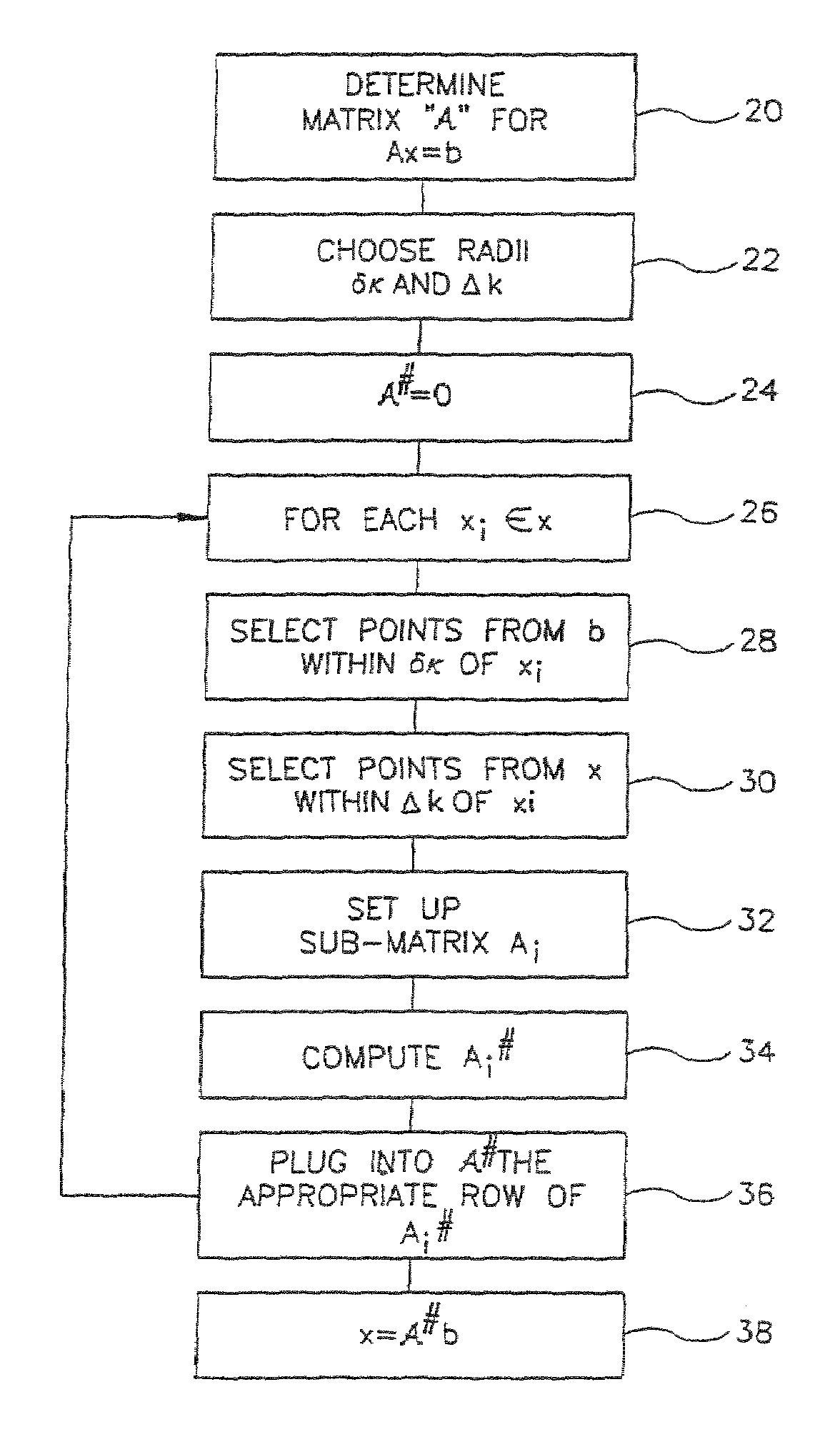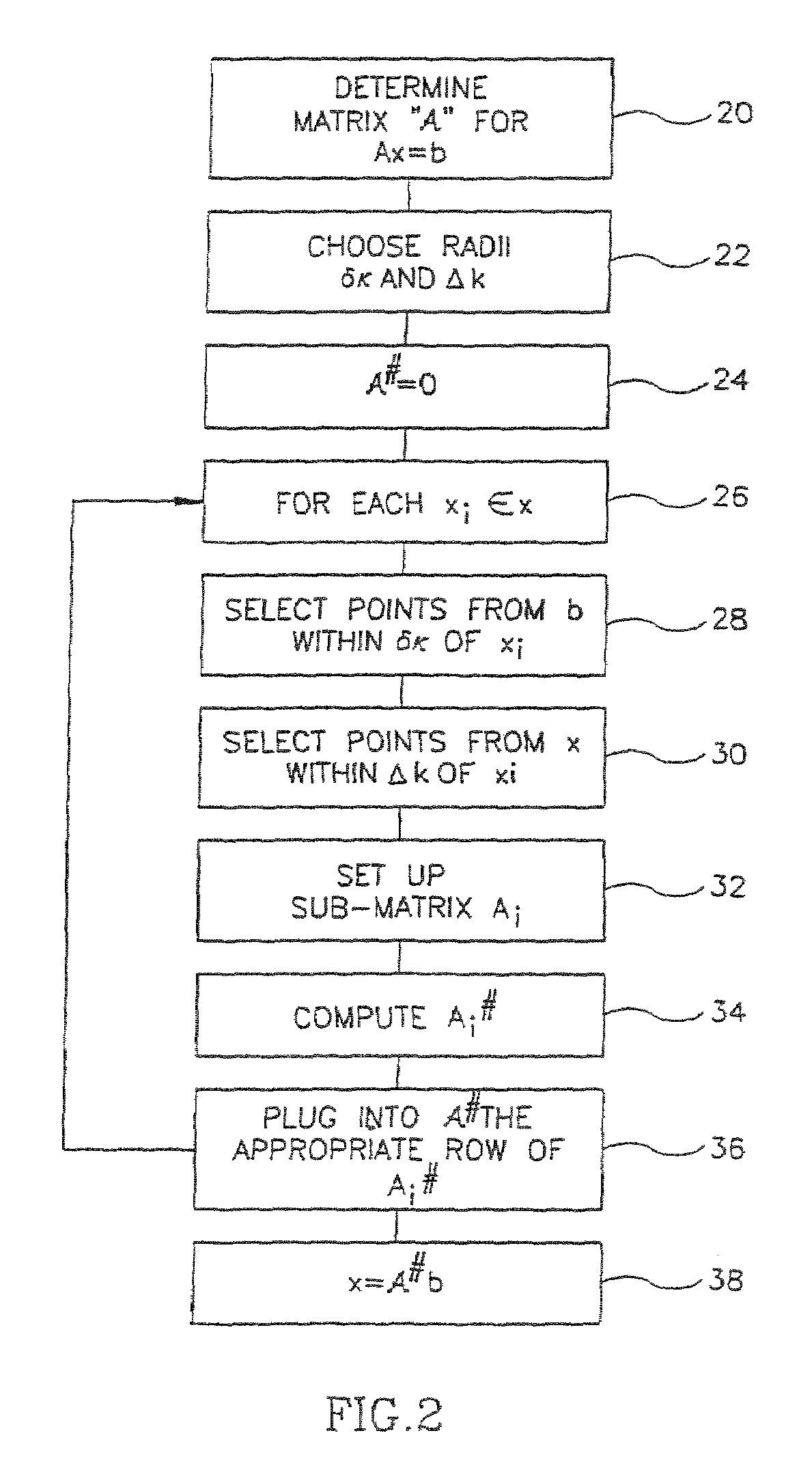Algebraic reconstruction of images from non-equidistant data
a non-equidistant data and algebraic reconstruction technology, applied in the field ofsignal data processing, can solve the problems of significantly shortening the acquisition time of mri data, non-uniform sampling, and data not uniformly sampled, and achieve the effect of computational efficiency
- Summary
- Abstract
- Description
- Claims
- Application Information
AI Technical Summary
Benefits of technology
Problems solved by technology
Method used
Image
Examples
Embodiment Construction
[0225]One aspect of some preferred embodiments of the present invention relates to resampling of data sampled originally on a first grid, (e.g., a non-uniform grid), to a second grid, (e.g., a uniform grid). The problem of non-uniform sampling is especially acute in MRI, where images are typically reconstructed using a Fourier transform. The fast version of the Fourier transform (FFT) usually requires that the data be uniformly sampled. It is noted that the following description is applicable also to resampling from a first non-uniform grid to a second non-uniform grid even when the resampled grid is referred to herein as a uniform grid.
[0226]FIG. 1 is a flowchart of a method of uniform resampling of data, in accordance with a preferred embodiment of the invention. In the following discussion, non-uniformly sampled data is arranged in a vector b comprising M data points. Uniformly sampled data is arranged in a vector x comprising N data points. A matrix “A” controls the interpolatio...
PUM
 Login to View More
Login to View More Abstract
Description
Claims
Application Information
 Login to View More
Login to View More - R&D
- Intellectual Property
- Life Sciences
- Materials
- Tech Scout
- Unparalleled Data Quality
- Higher Quality Content
- 60% Fewer Hallucinations
Browse by: Latest US Patents, China's latest patents, Technical Efficacy Thesaurus, Application Domain, Technology Topic, Popular Technical Reports.
© 2025 PatSnap. All rights reserved.Legal|Privacy policy|Modern Slavery Act Transparency Statement|Sitemap|About US| Contact US: help@patsnap.com



